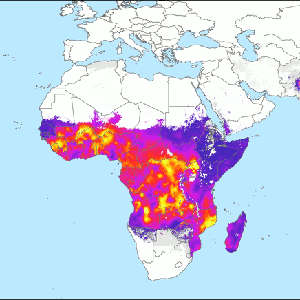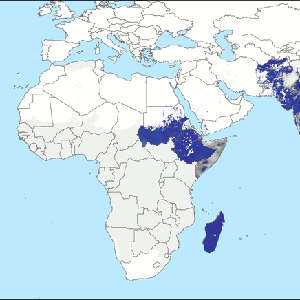Understanding longevity: From gene sequences to social inequity
03 April 2025
Published online 20 June 2019
New maps show progress in the fight against malaria has stalled in some areas of the Middle East.

The Malaria Atlas Project
Enlarge image
Researchers at the Malaria Atlas Project (MAP) at the University of Oxford, UK, in collaboration with colleagues at the Institute for Health Metrics and Evaluation at the University of Washington, USA, combined a variety of data to generate 5 × 5 kilometre resolution malaria incidence, prevalence and mortality maps for the period from 2000 to 2017. These maps, published in two papers in The Lancet, monitor how malaria, caused by the parasites Plasmodium falciparum and Plasmodium vivax, has evolved over time and space. Previous global maps have focused on a single year.
The deadliest of five human malaria species, P. falciparum, is mainly present in sub-Saharan Africa, where more than 90 per cent of the population were at risk of infection in 2017. The number of new clinical cases and deaths caused by P. falciparum malaria fell globally by around 28 and 42 per cent respectively between 2005 and 2017.

The Malaria Atlas Project
Enlarge image
“There has been a general downward trend for malaria burden in the Middle East for the study period, and progress within the last five years has been limited, with South Sudan losing ground since 2013,” says Daniel J. Weiss, Director of Global Malaria Epidemiology team at the MAP.
“In Yemen, P. vivax malaria incidence has been rising since 2015. In Sudan, data and model predictions showed a small rise in 2015, that has since fallen; whereas currently there is not enough data to quantify malaria incidence in South Sudan,” adds Katherine Battle, director of MAP’s Malaria Mapping for Elimination.
The maps are a tool to identify priority areas, a guide for policymakers, and a baseline to evaluate future anti-malaria strategies.
doi:10.1038/nmiddleeast.2019.89
Stay connected: